Tso moriri to leh 240 km. Tso moriri lake ladakh, is 29 km long and 8 km wide. Tso moriri is the largest high altitude lake in India, entirely in Indian Territory. Tso Moriri lake in Changthang region of Ladakh is one of the most beautiful, calm high altitude lakes in India. Tso moriri is about 7 km wide at its broadest point and about 19 KM long. Being part of the wetland reserve under Ramsar site, it is actual known as Tsomoriri Wetland Conservation Reserve and no one can pitch any tents or construct anything near the banks of the lake.
Tso Moriri
Tso moriri is the highest Ramsar site in the world. A large number of flora and fauna is found in the region. Since, it is very near to the Line of Actual Control. Everyone need to get Inner Line Permit to visit, Tso moriri lake in ladakh. Camps in Tso Moriri, travelers have to spend two days and one night of your life above 14,836 feet of the mean sea level, whiles the south side base camp of Mount Everest is 17,600 ft.
Just imagine the minimal altitude differences! Silent and colorful cold desert will take you inside the beautiful Himalayas. Be prepared for your toughest road transported expedition on the roof of the world. Your health must be in the best condition to view and enjoy the beauty of our great Himalayas, as its not alike Dal Lake. This is really difficult trip, even whom you already gone to Gurudamba lake of Sikkim or Rohtang pass of Himachal Pradesh earlier in your single day journey.
Tso Moriri Lake
Really unforgettable moments of your life will rejuvenate hence you are going to be the part of those colorful landscapes. Siberian or arctic type climate and nature you may find here, as this is like the tundra of India. Whilst you proceed further feel the absence of human life apart from military personnel. Turbo chilled airflow through the day and became knife as the sun goes down. No airlifting will be done if your health deteriorates suddenly due to high altitude sickness; all you need is oxygen bottles.
Only vegetarian foods are served as per Buddhist culture. No civic amenities, only three hours electricity connection is available after the dusk, just to recharge your battery gadgets. Due to huge pollution, we the metropolitan city dwellers have forgotten the real colors of our wonderful sky and water bodies. You will definitely rediscover those natural things here alike Nubra Valley. I have never seen such an amount of blue could be possible, without chemical paint! As we are unfamiliar to seeing vast sky and brackish water bodies everywhere of our surroundings.
Tso Moriri Ladakh
Of low productive ecosystems which protects unique floral and faunal species. The area is an extension of the western Tibetan plateau that lies above 14,800 feet mean sea level and supports diverse but low populations of several globally threatened mammals. The lake’s basin could also be categorized as an basin since it is a closed drainage basin that retains water and allows no outflow to other bodies of water such as rivers or oceans.
The lake is 20 to 50 kilometers southeast of the elevated valley of the core Rupshu Valley and falls within the greater Rupshu Plateau and valley area. The lake is ringed by hills rising over 20,000 feet. Changpas, the nomadic migratory shepherds, pastoral community of yak, sheep, goat, and horses of Tibetan origin and who are engaged in trade and work on caravans in Ladakh region, are the main inhabitants of the area. Changpa herders use the land of this valley as grazing ground and for cultivation.
Pangong to Tso Moriri
In the Ladakh union territory of India, the official name of the land and water reserve here is the Tso Moriri Wetland Conservation Reserve. The lake is at an altitude of 14,836 feet. It is the largest of the high altitude lakes entirely within ladakh of India in this Trans-Himalayan biographical region. It is about 26 km north to south in length and 3 to 5 km wide. The lake has no outlet at present and the water is brackish though not very perceptible to taste.
The lake is fed by springs and snow-melt from neighboring mountains. Most water enters the lake in two major stream systems, one entering the lake from the north, the other from the southwest. Both stream systems include extensive marshes where they enter the lake. It formerly had an outlet to the south, but this has become blocked and the lake has become a endorheic lake. The lake is oligotrophic in nature, and its waters are alkaline.
Accessibility to the lake is largely limited to summer season, though Korzok on the northwest shore and the military facilities on the eastern shores have year-round habitation. Draining a catchment area of 120 sq-km is enclosed by peaks exceeding 6,000 meters on both the east and west sides. On the south, a nearly flat valley connects with but does not drain into or out of the Pare Chu river.
This valley contains the Nuro Sumdo wetlands (with a catchment area of 20 km2 a boggy area that mostly drains into the Pare Chu. Several small mountain streams feed the lake, including one through pasture land at Peldo Le. The lake is fed by springs and snow melt and has a maximum depth of 130 feet. Aridity and cold desert conditions prevail in the lake region with summer temperature varying from 0° to 30°C and winter temperature recording -10° and -40°C. Geologically the lake is in Ordovician rock.
Tso Moriri to Leh
Tso Moriri lake is located to the southeast of Leh in eastern Ladakh, at a road distance of 240 kilometers. The road is in a good condition for the most part. One can also reach Tso Moriri directly from the Pangong lake via the remote Changthang region. This is considered to be one of the most beautiful drives in the entire Ladakh region.
Foreigners are not allowed to go beyond the Man – Merak. villages on Pangong Tso. As permits are not issued for non Indians. The distance between Pangong to tso moriri is 378 km via Pangong lake road, and there are no petrol pumps in the area. Carrying enough fuel is therefore necessary. Leh is also connected by air with many destinations in India.
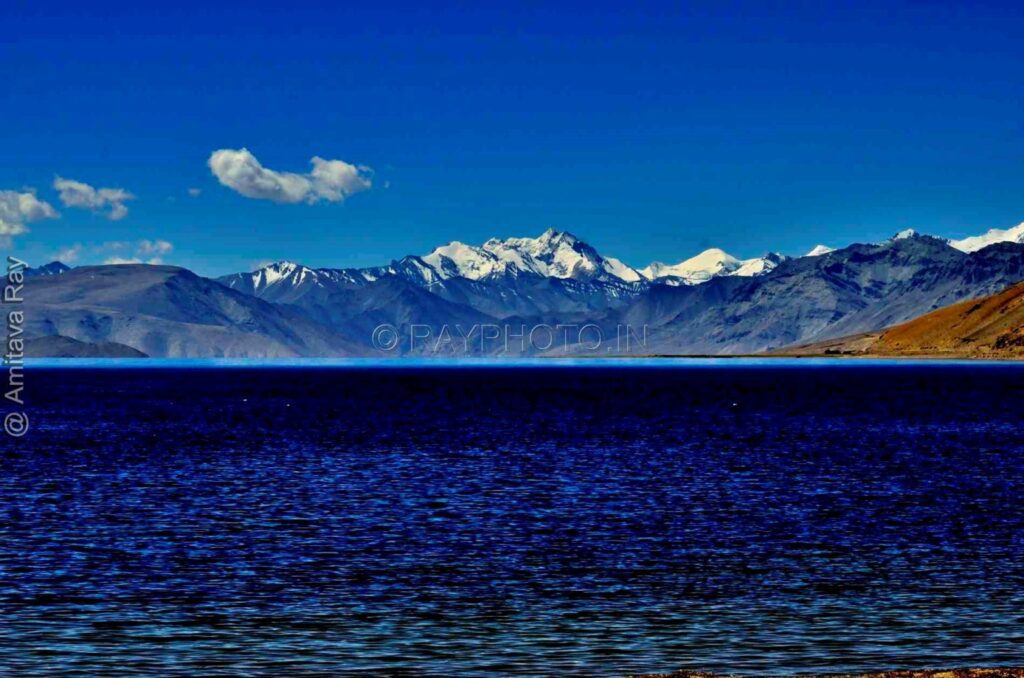
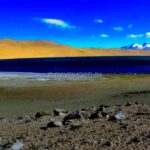
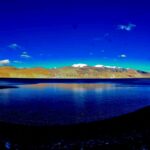
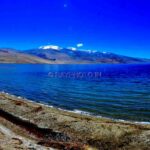
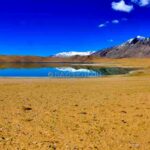

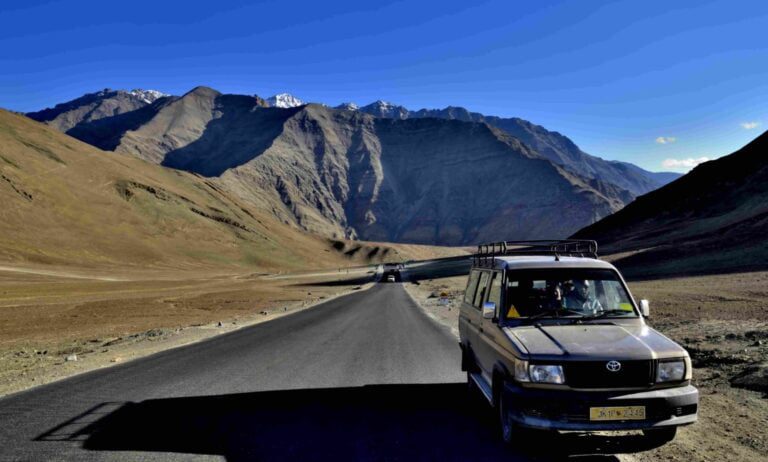
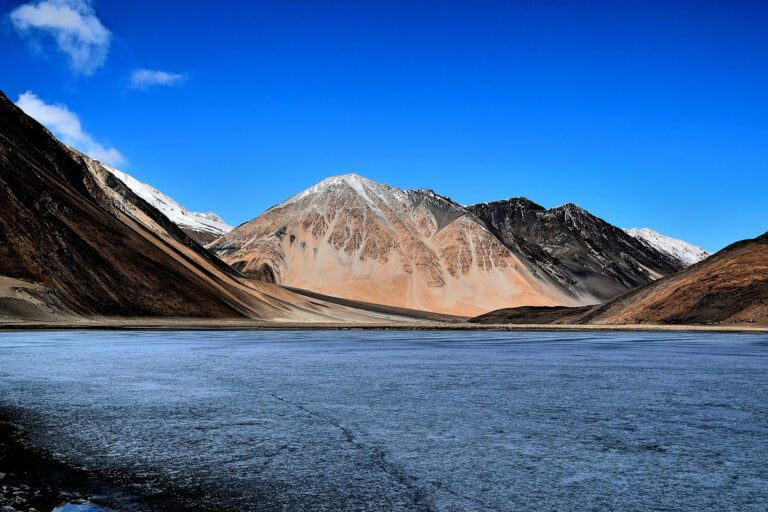
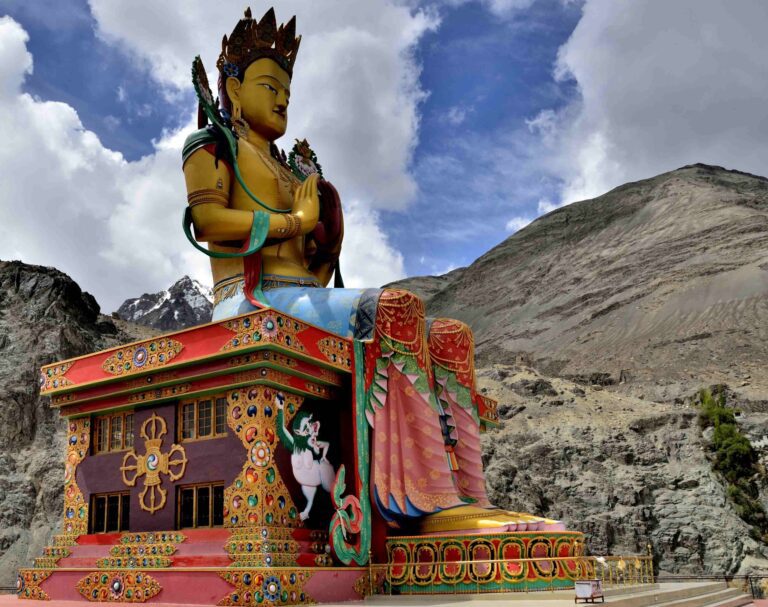
Buy Tso Moriri Himalayan Scenery Photographs 4K resolutions here
Siberian or arctic type climate and nature you may find here, as Tso Moriri Lake is like the tundra of India. Travel further to feel the absence of human life apart from blue water and turbo chilled airflow through the day and became knife as the sun goes down.